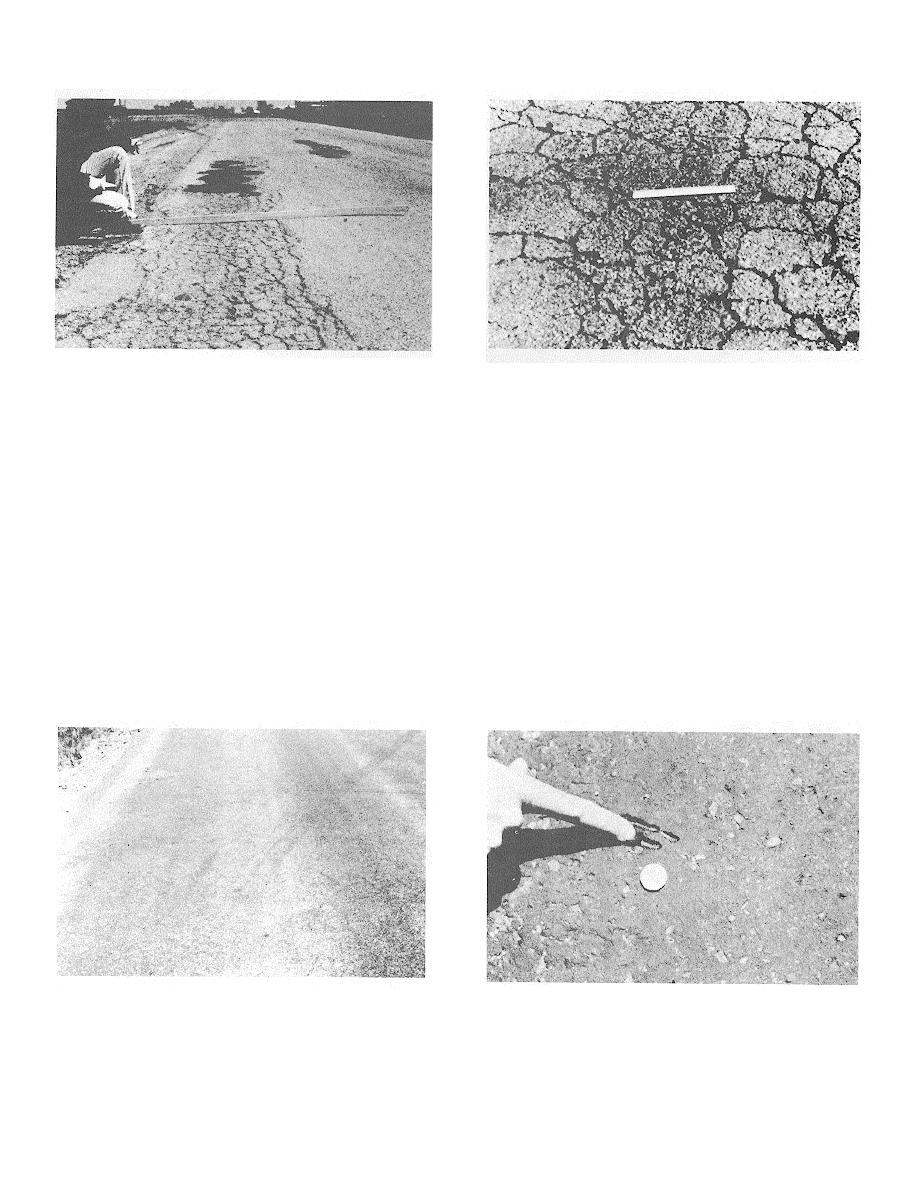
TM 5-623
Figure B-6. High-severity alligator cracking.
Figure B-7. High-severity alligator cracking.
How to Measure:
Alligator cracking is measured in square feet of surface area. The major difficulty in
measuring this type of distress is that two or three levels of severity often exist within one
distressed area. If these portions can be easily distinguished from each other, they
should be measured and recorded separately. However, if the different levels of Severity
cannot be divided easily, the entire area should be rated at the highest severity level
present.
Name of Distress:
Bleeding
Description:
Bleeding is a film of bituminous material on the pavement surface which a creates shiny,
glass like, reflecting surface that usually becomes quite sticky. Bleeding is caused by
excessive asphalt cement or tars in the mix, excess application of a bituminous sealant,
and/or low air void content. It occurs when asphalt fills the voids of the mix during hot
weather and then expands onto the pavement surface. Since the bleeding process is not
reversible during cold weather, asphalt or tar will accumulate on the surface.
Severity Levels:
L-Bleeding has only occurred to a very slight degree and it is noticeable only during a few
days of the year. Asphalt does not stick to shoes or vehicles (fig B-8).
M-Bleeding has occurred to the extent that asphalt sticks to shoes and vehicles during only a
few weeks of the year (fig B-9).
Figure B-9. Medium-severity bleeding.
Figure B-8. Low-severity bleeding.
B-4



 Previous Page
Previous Page
